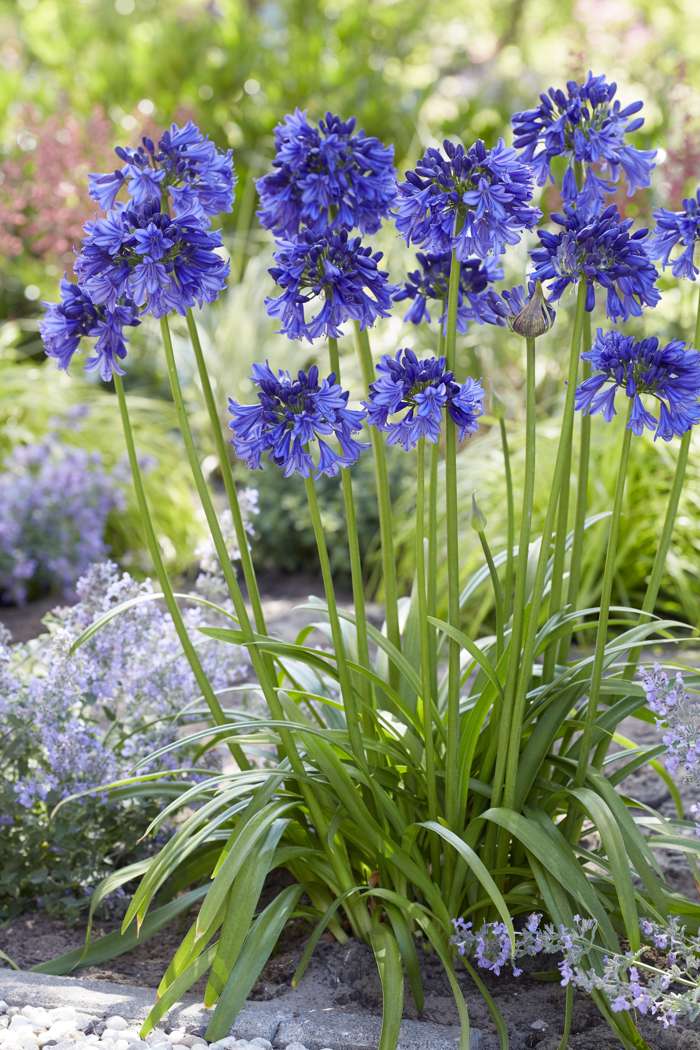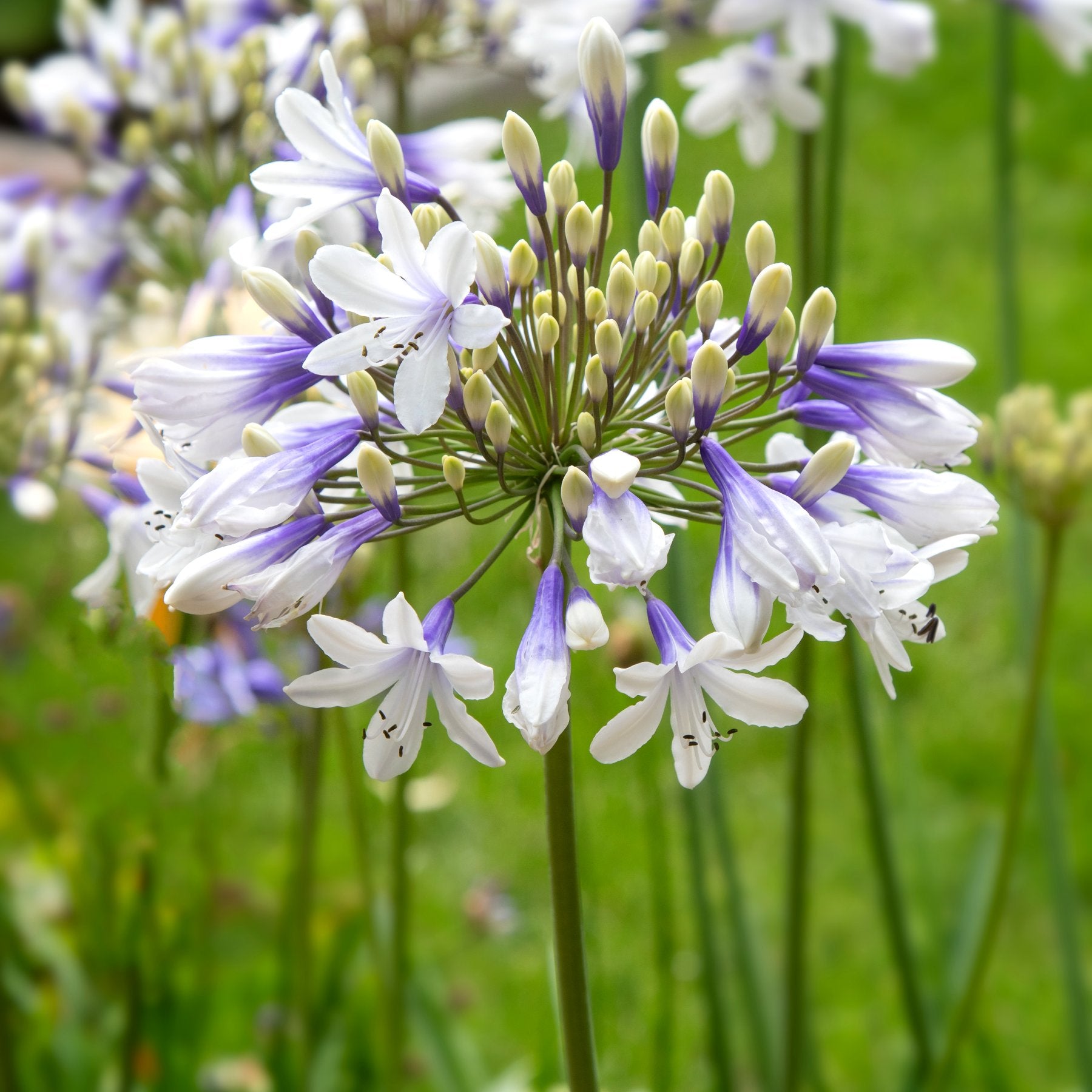Typical Agapanthus Issues and Exactly How to Resolve Them
Typical Agapanthus Issues and Exactly How to Resolve Them
Blog Article
Letting Loose the Secret to Effective Agapanthus Cultivation: Tips and Tricks for a Flourishing Yard
In the realm of gardening, cultivating agapanthus effectively requires a critical strategy that includes various aspects of plant care. With mindful focus to detail, one can unlock the tricks to supporting these stunning flowers, resulting in a garden that grows with charm and vibrancy. By comprehending the nuances of agapanthus farming, one can create a setting where these plants thrive and grow generously. In the complying with discussion, we will explore important pointers and methods that will certainly direct you towards a flourishing agapanthus garden, using understandings right into best methods, soil conditions, watering strategies, and extra.
Planting Agapanthus: Finest Practices
When growing Agapanthus, proper dirt preparation is vital for making sure effective growth and development of these lovely blossoms. Agapanthus, generally recognized as Lily of the Nile or African lily, prospers in well-draining soil with a slightly acidic to neutral pH degree - Agapanthus. Before planting, it is important to modify heavy clay dirts with organic issue such as compost or peat moss to enhance drain and provide necessary nutrients for the plants
To plant Agapanthus, choose an area that receives full sunlight to partial shade, as this will advertise healthy and balanced development and abundant flowering. Dig a hole two times the diameter of the plant's root ball and place the Agapanthus at the exact same deepness it was formerly expanding. Delicately backfill the opening with dirt, weighing down strongly to eliminate any kind of air pockets around the origins.
Water the freshly grown Agapanthus extensively and remain to maintain the dirt evenly moist, specifically throughout the plant's active growing period. Agapanthus. Applying a well balanced fertilizer once a month can additionally support the plant's growth and flowering. By adhering to these best practices for planting Agapanthus, you can produce a spectacular screen of these exciting blossoms in your yard
Suitable Soil Issues for Agapanthus
For optimum growth and flowering success of Agapanthus plants, ensuring the soil problems are excellent is crucial. Agapanthus favors dirt that is rich in nutrients, so incorporating a well balanced fertilizer during the expanding season can advertise healthy development and vivid flowers.

Watering and Feeding Tips
To guarantee healthy development and vivid flowers, proper watering and feeding strategies are essential for effective Agapanthus cultivation. Agapanthus plants profit from routine watering, specifically during the growing season. It is advised to water deeply as soon as a week, ensuring the dirt is wet however not saturated. During hot climate or in pots, more regular watering might be essential to avoid the soil from drying click for info entirely.
When it pertains to fertilizing Agapanthus, a balanced fertilizer with equivalent components nitrogen, phosphorus, and potassium can be used in the springtime to promote healthy growth and flowering. Slow-release plant foods are excellent for supplying nutrients slowly over a prolonged duration. Stay clear of over-fertilizing, as this can bring about extreme foliage development at the cost of blossoms.
In addition, integrating raw material like garden compost into the dirt can boost nutrient levels and boost dirt framework, helping in the total wellness of the Agapanthus plants. By adhering to these watering and fertilizing ideas, garden enthusiasts can guarantee their Agapanthus plants thrive and produce spectacular screens of blossoms.
Pruning and Deadheading Strategies
Proper pruning and deadheading techniques play a crucial duty in maintaining the health and looks of Agapanthus plants, enhancing the vital practices of watering and fertilizing for successful cultivation. Pruning Agapanthus involves getting rid of spent flower heads, yellowing or dead fallen leaves, and total shaping of the plant to advertise much better growth. Deadheading, the process of removing discolored blossoms, not only enhances the plant's appearance but likewise urges additional flowering.
When deadheading Agapanthus, it is advisable to clip off the flower stem at the base using sharp, tidy shears. This procedure reroutes the plant's energy from seed manufacturing back right into origin and vegetation growth, advertising a much healthier and more durable plant. Regular deadheading can prolong the flowering duration of Agapanthus and avoid self-seeding, which can result in overcrowding.
In terms of pruning, Agapanthus normally take advantage of a light trim after blooming to clean up the plant and urge fresh growth. Cutting down the spent flower stems and removing any type of dead or damaged vegetation aids preserve the plant's vigor and overall appearance. However, it is vital to prevent cutting right into the crown of the plant, as this can compromise its health.

Protecting Agapanthus From Vermins and Diseases
Executing reliable pest and disease monitoring strategies is important to safeguarding the health and wellness and vigor of Agapanthus plants in cultivation. One usual pest that impacts Agapanthus is the Agapanthus borer, a caterpillar that passages into the plant, causing damages to the blossoms and leaves.
In addition to parasites, Agapanthus are at risk to conditions such as origin rot and fungal leaf areas. By staying watchful and dealing with insect and disease issues without delay, garden enthusiasts can aid their Agapanthus prosper and prosper.

Conclusion
Finally, successful you can find out more cultivation of agapanthus needs correct planting strategies, excellent soil problems, adequate watering and fertilizing, routine trimming and deadheading, and protection from pests and illness. By complying with these pointers and tricks, garden enthusiasts can ensure a growing yard loaded with gorgeous agapanthus flowers. Agapanthus. Keep in mind to keep regular care and attention to detail to promote the health and wellness and long life of these stunning plants
When planting Agapanthus, appropriate soil prep work is crucial for making sure effective development and growth of these beautiful blossoms.Water the freshly planted Agapanthus thoroughly and continue to keep the dirt uniformly damp, especially during the plant's energetic expanding period.For ideal development and blooming success of Agapanthus plants, ensuring have a peek here the dirt conditions are ideal is critical. When hair transplanting or growing Agapanthus, guarantee the soil is well-prepared to provide the essential structure for the plants to develop themselves efficiently. One common pest that influences Agapanthus is the Agapanthus borer, a caterpillar that passages right into the plant, causing damages to the flowers and leaves.
Report this page